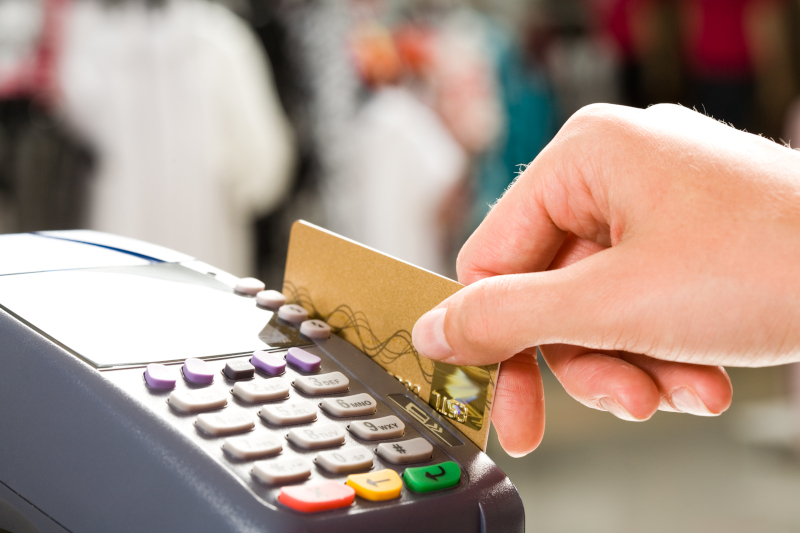This website uses cookies so that we can provide you with the best user experience possible. Cookie information is stored in your browser and performs functions such as recognising you when you return to our website and helping our team to understand which sections of the website you find most interesting and useful.

Trying To Make Sense of Merchant Processing Fees
February 7, 2020
Finding a High-Risk Payment Processor or Merchant Account
May 11, 2020The world of payment processing can be a complicated one. Many credit card processing companies will deny service or charge increased rates to a business for being “high risk.” But what does it mean to be high risk, and what implications does that hold?
High-Risk Merchant Accounts
When a business opens a merchant account in order to receive credit card payments, that business is classified as high risk or low risk. This classification mainly depends on the type of business and refers to the risk of chargebacks during credit card transactions. Some industries have a reputation for frequent chargebacks, so your business will automatically qualify as a high risk if it falls in one of these industries. Chargeback history is also taken into account, so if your business has a chargeback rate of 1% or higher, it may also be classified as high risk.
High-risk merchant accounts pose a greater risk to banks and credit card companies, and therefore usually face higher processing rates, extra fees, and even refusal of service. As a high-risk merchant, it is extremely important to find a processing company that specializes in high-risk payment processing, like Double Helix. We have the knowledge and experience to properly handle the risk at a minimized cost to you.
High Risk vs Low Risk
If such large implications come with being a high-risk merchant account, then what does it take to be considered low risk or high risk?
In general, high-risk merchants are larger companies that receive a higher volume of transactions. Put simply, the more transactions that occur, the greater the likelihood of a chargeback. Therefore, large businesses are more likely to be considered high risk. In addition to size, industry and transaction history play key roles in determining a merchant’s risk level.
Every bank and processing company will have different guidelines for what they consider to be high risk. However, there are a few features that typically come with a high or low-risk business.
Low-risk merchants:
- Generally, receive less than $20,000 in payment transactions each month
- Have an average transaction lower than $500
- Work in an industry that is already considered low risk (i.e. baby products, clothing)
- Operates in a low-risk country (i.e. United States, EU, Australia, Canada)
- Minimize returns and have chargebacks on less than 1% of transactions
High risk merchants:
- Generally, receive more than $20,000 in payment transactions each month
- Have an average transaction higher than $500
- Sell to high-risk countries with reputations of high fraud levels
- Work in an industry that is considered high-risk
- Have poor credit history or a high percentage of chargebacks in previous transactions
What industries are considered high risk?
There are a wide variety of industries and business types that are generally classified as high risk. Any business that typically has large transactions or an audience with high fraud risk will be considered high risk. Some of the most common high-risk industries include:
- Adult or pornographic content
- Travel or airline companies
- Gaming related merchandise such as game hacks or codes
- Automotive brokers
- Cigarettes, vapes, and CBD
- Debt collection services
- Timeshares
- Subscription billing
- Self-defense products such as mace
- Night clubs
- Life coaching
- Modeling
- Fantasy sports
Costs of Being High Risk
As stated before, there are implications involved with being a high-risk merchant. Many mainstream payment processing companies will charge overpriced rates or excessive fees to high-risk merchant accounts. These extra fees can include a setup fee, monthly and annual fees, and early termination fees. It’s important to be aware of the reason for each charge before signing with a provider, which should be detailed in the contract.
Two of the main expenses high-risk merchants face are rolling reserve and chargeback fees. A rolling reserve is akin to an insurance policy, in which a percentage of the business’ transaction volume is secured by the bank for a certain period of time, typically no more than 6 months. This money is set as protection for the banks against any chargebacks or fraudulent activity and is returned automatically after the designated holding period. Higher risk businesses will face large rolling reserves. At the same time, there can be chargeback fees to cover the administrative costs of processing a chargeback. This combination of charges can end up totaling double what a low-risk merchant would pay.
Advantages of Being High Risk
Although high-risk merchants often face more fees and higher rates from credit card companies and banks, there are some advantages that come along with high-risk business:
- Chargeback protection: First and foremost, high-risk businesses should have high chargeback protection since they are prepared for the worst. Paying expensive fees means the payment processing company has your back when a chargeback occurs, instead of potentially having your account terminated.
- Global Market: High-risk accounts have little to no limitations in terms of location and currency. This allows you to reach a larger audience and focus on business expansion.
Applying for a High-Risk Merchant Account
An online application is required before a business can receive a high-risk merchant account. Here’s a list of the most important preparations to make before applying:
- Shareholder’s certificate
- Incorporation certificate
- A copy of your passport
- A copy of the utility bill of local directors and shareholders holding more than 15%
- Processing history for the last 6 months
- License number and name of license issuer, if your business has licensing requirements
Payment Processing for High-Risk Merchant Accounts
Once your business officially has a high-risk merchant account, finding the right payment processing company is the next important step. The quality of your processing company is extremely important, and there are many factors to consider when determining the right company for your business.
- Friendly and Consistent Support: High-quality customer service is a valuable aspect of a payment processing company, especially for high-risk businesses. In case of an unexpected event, there should be staff available at all times to aid the situation and answer any questions.
- Flexibility: A strong payment processing company can handle your needs. They should have a variety of options available to suit all of your desired payment methods, and they should be able to find banks that offer affordable rates for your business type.
- Transparency: Always avoid ambiguity when it comes to rates and fees. All charges should be clearly explained by the processing company, and basic pricing structures should be identifiable on the website. If a company is trying to conceal extra charges, they likely have more to hide than just fees.
- Security: In line with customer service, a high-risk processing company should provide exceptional security measures including anti-fraud tools and a chargeback prevention system.
- Experience: As with all businesses, a company with expertise in the field will provide a more inclusive and seamless payment processing experience.
- Technology: Any credit card processing company should be up-to-date on the latest tech. In a quickly changing world, you want to make sure that your company has the available resources to make your transactions as efficient as possible. Look for friendly user design on online payment systems, with no downtimes or surprises.
Above all, look for a processing company that cares. Payment processing for high-risk merchants means looking out for the business and providing seamless, all-inclusive support.





